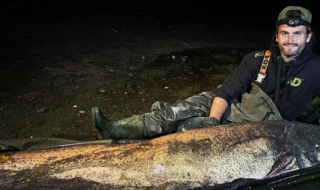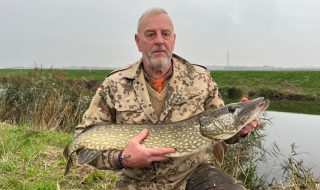New data show that salmon are again in decline because of the dual effects of a prolonged drought in 2011 followed by extreme flooding last year.
Scientists from the Game & Wildlife Conservation Trust (1) who have been monitoring Atlantic salmon populations on the River Frome for the past 40 years, have revealed that following an encouraging upturn in wild salmon stocks over the past few years, there is now a prospect of a severe decline in the population.
Dr Anton Ibbotson, from the GWCT’s Salmon & Trout Research Centre (2) on the River Frome, explained: “Unfortunately, the measured population size of River Frome juvenile salmon in 2011 was roughly half the size of recent years, falling from 130,000 in 2010 to 64,000 in 2011; thereby reversing a recovery that had been developing over several years.
The size of the 2012 smolt run was estimated at fewer than 7,000 fish in comparison to runs that have reached around 13,000 in recent times. This will undoubtedly have a major consequence for adult salmon returning to the River Frome and other rivers that have experienced similar conditions in the next few years.Dr Ibbotson continued: “The impact of drought in 2011 resulted in a depleted population of juvenile salmon most likely, because of a reduction in habitat.
Our estimate of the number of smolts leaving the river in 2012 was unusually low and so we are anticipating a significant drop in the numbers of returning adults in 2013 and 2014. This has now been compounded by the extreme flooding we’ve seen since last spring and we have some evidence that the juvenile population for 2012 is also depleted.
This will have ‘knock-on’ effects for the smolt output in 2013 and returns of adult salmon through to 2015.“Whilst we cannot produce similar data for other rivers, the same weather patterns were experienced across the south and southwest of England and parts of Wales and so we might expect similar impacts of low returns of salmon adults in those regions over the next few years. This will include the internationally important chalk streams in the south of England.”Dr Ibbotson said: “The data we produce on smolt output each year could be used in an early warning system for a species which has already declined by 70% over the past three decades. Currently, we tend to focus on counts of returning adult salmon to inform us of the health of salmon populations and whilst this is useful it is a little like closing the stable door after the horse has bolted.
With the accurate estimates of smolt abundance we can predict future adult salmon returns and use this information to alert river and fishery managers so that they are able to respond in advance. A really simple example might be further restrictions on the taking of fish by anglers for a short period of time when they are given advance warning that runs of adult salmon are likely to be lower than usual. I think anglers would understand that this is preferable to retrospective action. It would help both in protecting vulnerable populations and in bringing about a faster recovery wh en conditions allow.”Paul Knight, Chief Executive of the Salmon & Trout Association (3) agreed with this approach and added, “An increased emphasis on a catch and release policy on affected rivers would help get us through these periods of poor returns whilst still maintaining the economic activity in the river.”Research carried out on the River Frome by the GWCT researchers is identifying how environmental conditions in freshwater affect salmon populations.
Over the past 8 years the scientists have tagged 70,000 salmon parr with individual tags and monitor them as they leave the river as smolts and when they return from the sea as adults a few years later.“We hope that river managers can use this early warning to respond rapidly and take measures to protect populations over the next three years. Crucially these measures should be designed to ensure that as many eggs as possible reach the spawning grounds and that conditions for the eggs and juveniles maximise their survival,” concluded Dr Ibbotson.





